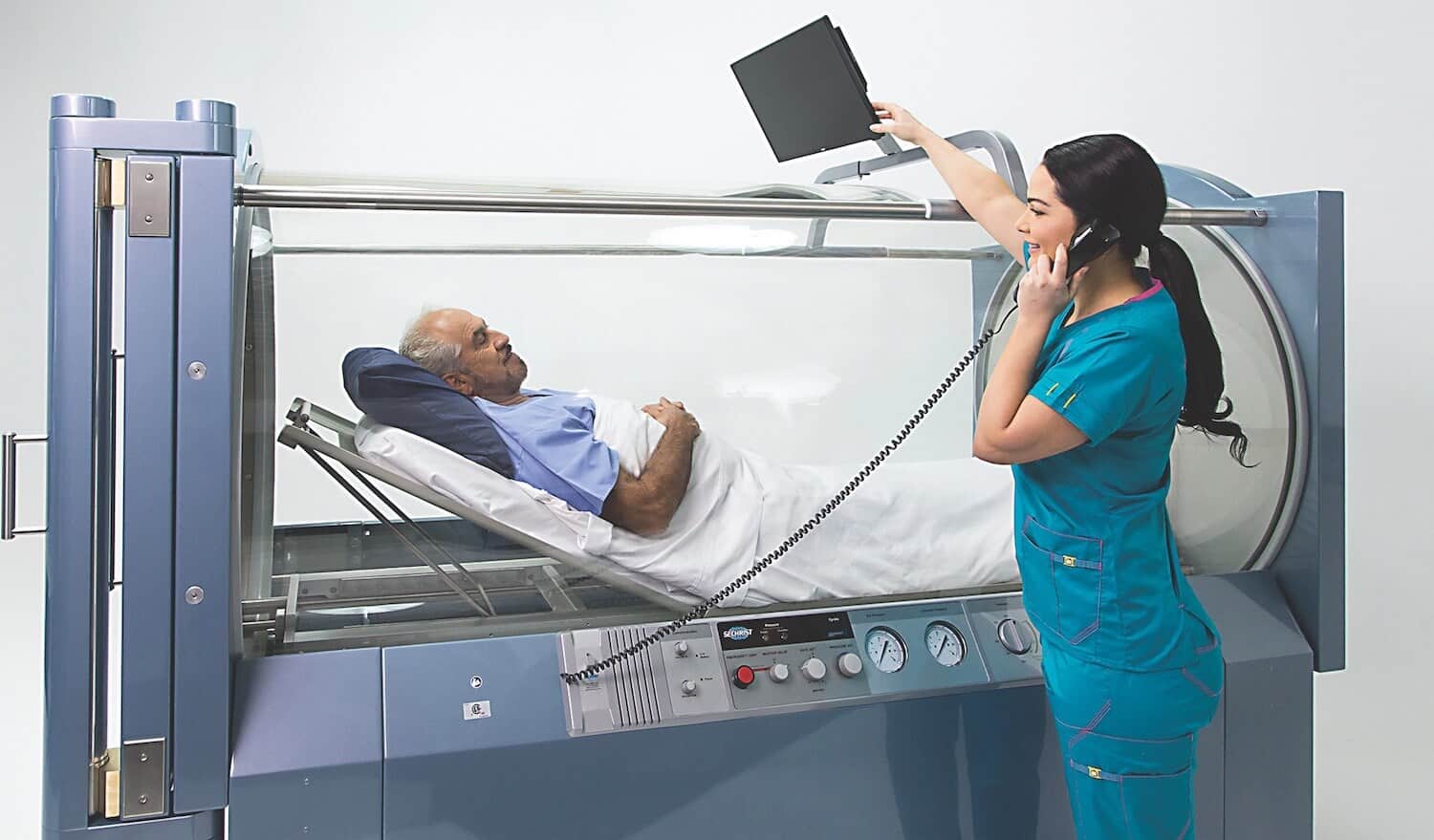Hyperbaric Oxygen Therapy (HBOT) is a non-invasive medical treatment that involves breathing in 100% oxygen at high atmospheric pressure in a specially designed chamber. It has been used for decades to treat a variety of medical conditions, including decompression sickness, carbon monoxide poisoning, and wounds that won’t heal.
But in recent years, HBOT has gained attention as a potential treatment for a wide range of other conditions, from autism to traumatic brain injury. In this article, we will explore the science behind HBOT, the conditions it may help treat, and the potential benefits and risks associated with this innovative therapy.
What is Hyperbaric Oxygen Therapy?
Hyperbaric Oxygen Therapy involves the patient breathing pure oxygen in a pressurized chamber, where atmospheric pressure can be up to three times higher than normal. The increased pressure helps the body to absorb more oxygen, which in turn promotes healing.
The therapy can be delivered in two ways: as a monoplace chamber, where the patient lies down in a single-person chamber, or as a multiplace chamber, which can accommodate several patients at once. During the therapy, patients wear a mask or hood that delivers pure oxygen to the lungs.
How Does HBOT Work?
At sea level, the air we breathe is made up of approximately 21% oxygen. However, when the body is exposed to higher atmospheric pressure, such as during HBOT, the body is able to absorb more oxygen. This increase in oxygenation helps the body to fight infections, reduce inflammation, and promote healing.
In addition, the increased oxygen levels in the blood can help to stimulate the growth of new blood vessels, which can improve circulation to damaged tissues. This is particularly important for conditions where healing is impeded by poor blood flow, such as diabetic foot ulcers.
What Conditions Can HBOT Treat?
Hyperbaric Oxygen Therapy is currently approved by the U.S. Food and Drug Administration (FDA) for the treatment of several conditions, including:
- Decompression sickness, a condition that can occur when a diver surfaces too quickly, causing bubbles of gas to form in the bloodstream and tissues.
- Carbon monoxide poisoning, which occurs when carbon monoxide gas builds up in the bloodstream, preventing oxygen from reaching the body’s tissues and organs.
- Gas gangrene, a serious infection caused by a type of bacteria that thrives in low-oxygen environments.
- Radiation injuries, which can occur in cancer patients who undergo radiation therapy.
- Chronic non-healing wounds, such as diabetic foot ulcers and radiation-induced tissue damage.
In addition to these approved uses, HBOT has also been studied as a potential treatment for a range of other conditions, including:
- Traumatic brain injury
- Autism spectrum disorder
- Stroke
- Multiple sclerosis
- Lyme disease
- Cerebral palsy
- Alzheimer’s disease
While some studies have shown promising results, more research is needed to fully understand the potential benefits and risks of HBOT for these conditions.
Read Also: Adam Demos Wiki, Biography, Wife, Age, Net Worth, Kids & More
What are the Benefits and Risks of HBOT?
Hyperbaric Oxygen Therapy has been shown to have several potential benefits, including:
- Improved wound healing
- Reduced inflammation
- Improved circulation
- Enhanced immune function
- Reduced risk of infection
- Improved brain function
However, as with any medical treatment, there are also potential risks associated with HBOT. These can include:
- Ear and sinus damage
- Lung damage
- Vision changes
- Seizures
- Fire hazard (due to the high oxygen levels in the chamber)
It is important to discuss the potential risks and benefits of HBOT with your healthcare provider before deciding whether this therapy is right for you.
Conclusion
HBOT has also been shown to have potential benefits for individuals with certain neurological conditions. For instance, studies have suggested that it may help improve symptoms of traumatic brain injury, stroke, and cerebral palsy. Additionally, HBOT has been investigated as a possible treatment for conditions such as multiple sclerosis and Alzheimer’s disease.
One of the benefits of HBOT is that it is a non-invasive treatment, meaning that it does not require surgery or any other invasive procedures. However, it is important to note that there are still risks associated with HBOT, such as ear pain, sinus pain, and lung damage.
Overall, hyperbaric oxygen therapy shows promise as a treatment for a range of conditions, but more research is needed to fully understand its potential benefits and risks. If you are considering HBOT as a treatment option, it is important to speak with your healthcare provider to determine whether it is a safe and appropriate choice for you.
In conclusion, hyperbaric oxygen therapy is a treatment that involves breathing in pure oxygen in a pressurized chamber. It has been shown to have potential benefits for a range of conditions, including wounds, infections, and certain neurological conditions. While it is a non-invasive treatment, there are still risks associated with HBOT, and more research is needed to fully understand its potential benefits and risks. If you are considering HBOT as a treatment option, be sure to speak with your healthcare provider to determine whether it is a safe and appropriate choice for you.
Also Read: Aishwarya Reddy (Warangal Vandhana) Wiki, Age, Height & Bio






